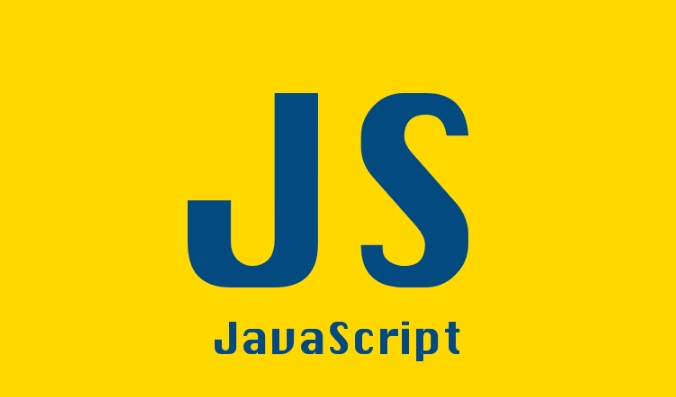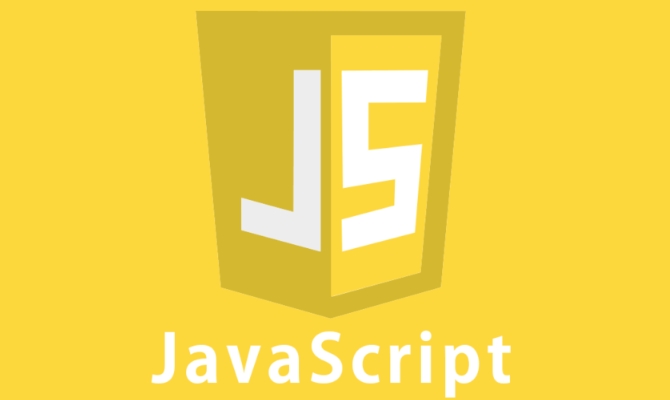A Practical Guide to Content Security Policy (CSP)
Jul 27, 2025 am 04:05 AMCSP is an HTTP header that blocks unauthorized scripts and resources, preventing XSS, clickjacking, and data injection attacks by allowing only trusted sources. 2. Implement it via the Content-Security-Policy header with directives like script-src, style-src, and img-src to restrict resource loading. 3. Avoid 'unsafe-inline' and 'unsafe-eval', use nonces or hashes for inline scripts, and explicitly allow trusted third-party domains without wildcards. 4. Test using Report-Only mode with a report-uri to monitor violations before enforcement. 5. Fix common issues like blocked inline scripts by moving to external files or using unique nonces per request. 6. Adopt a zero-trust baseline with default-src 'none' and explicitly permit required sources. 7. Monitor violation reports for blocked resources and refine the policy until stable. 8. Deploy a strong, tailored policy that balances security and functionality, ensuring continuous monitoring and updates as dependencies evolve.

Content Security Policy (CSP) is one of the most effective tools for mitigating common web vulnerabilities like cross-site scripting (XSS), clickjacking, and data injection attacks. It works by allowing developers to define exactly which resources the browser can load — such as scripts, styles, images, and fonts — and from where. If implemented correctly, CSP can drastically reduce the risk of malicious code execution.

But despite its power, CSP is often misunderstood or poorly configured. This guide breaks down CSP into practical steps, helping you implement a strong policy without breaking your site.
What CSP Actually Does
At its core, CSP is an HTTP response header that tells the browser:
"Only run scripts or load assets from these trusted sources — and nowhere else."

For example, if an attacker injects a malicious script into your page (via XSS), but that script isn’t hosted on one of your approved domains, CSP blocks it from executing.
Common threats CSP helps prevent:

- XSS attacks (reflected, stored, DOM-based)
- Insecure inline scripts and event handlers
- Untrusted third-party resource loading
- Data exfiltration via unauthorized endpoints
CSP doesn’t replace input validation or secure coding practices — it adds a strong safety net.
How to Implement a Basic CSP Header
Start by adding the Content-Security-Policy header to your server responses. Here's a minimal but practical example:
Content-Security-Policy: default-src 'self'; script-src 'self'; style-src 'self' 'unsafe-inline'; img-src 'self' data:;
Let’s break down what each part means:
default-src 'self'– Fallback: only allow resources from the same origin.script-src 'self'– Only load JavaScript from your own domain.style-src 'self' 'unsafe-inline'– Allow CSS from your domain and inline<style>tags (commonly needed).img-src 'self' data:– Allow images from your domain and embedded data URLs.
? Tip: Avoid
'unsafe-inline'and'unsafe-eval'when possible. They weaken security significantly.
You can test your policy using the Content-Security-Policy-Report-Only header first — it won’t block anything but reports violations.
Example:
Content-Security-Policy-Report-Only: default-src 'self'; report-uri /csp-report-endpoint
This lets you monitor issues before enforcing the policy.
Common Pitfalls and How to Avoid Them
Even with good intentions, CSP setups often fail due to real-world complexity. Here are frequent issues and how to handle them:
1. Blocking legitimate inline scripts
Many sites rely on inline <script> tags or onclick="" handlers. CSP blocks these by default.
? Fix:
- Move scripts to external files.
- Use
nonceorhashattributes for allowed inline scripts.
Example with nonce:
<script nonce="2726c7f26c"> // trusted inline script </script>
Then in CSP:
script-src 'self' 'nonce-2726c7f26c';
The server must generate a unique nonce per request — never reuse.
2. Third-party dependencies (analytics, widgets, CDNs)
Tools like Google Analytics, Facebook SDKs, or Cloudflare fonts require external domains.
? Fix: Explicitly allow trusted domains:
script-src 'self' https://www.google-analytics.com https://apis.google.com; font-src 'self' https://fonts.gstatic.com;
Only allow specific hosts — avoid wildcards like *.com.
3. Dynamic scripts or JSONP
Some legacy code builds script URLs dynamically or uses eval().
? Problem: These often trigger CSP violations and indicate insecure patterns.
? Fix:
- Refactor to use modules or safe APIs.
- Use
strict-dynamicfor modern setups:script-src 'self' 'unsafe-inline' 'strict-dynamic' https:;
This allows scripts to load other scripts if initiated by trusted sources.
?? Note:
strict-dynamicimproves compatibility but reduces protection if the initial script is compromised.
Testing and Monitoring Your CSP
A misconfigured CSP can break your site. Always test carefully.
Steps to test:
- Use Report-Only mode first.
- Set up a report endpoint to collect violations:
Content-Security-Policy-Report-Only: default-src 'self'; report-uri https://yourdomain.com/csp-reports
- Use tools like Report URI or self-hosted loggers.
- Monitor logs for blocked resources — they’ll show what’s breaking.
Common violation examples in reports:
- Blocked inline script from
'unsafe-inline' - Script loaded from
cdnjs.cloudflare.comnot in allowlist - Base64-encoded image blocked due to
data:not inimg-src
Once reports are clean, switch to enforcing mode.
A Realistic Strong CSP Example
Here’s a balanced, secure policy for a typical modern web app using Google Fonts and Analytics:
Content-Security-Policy: default-src 'none'; script-src 'self' 'nonce-random123' https://www.google-analytics.com; style-src 'self' 'unsafe-inline' https://fonts.googleapis.com; img-src 'self' data: https:; font-src 'self' https://fonts.gstatic.com; connect-src 'self' https://api.yoursite.com; frame-src 'none'; object-src 'none'; base-uri 'self'; form-action 'self'; report-uri /csp-violation-report
Key improvements:
-
default-src 'none'starts with zero trust. - Explicitly allows only what’s needed.
- Blocks
<object></object>,<embed></embed>, and untrusted frames. - Uses nonce for inline scripts.
- Reports violations for monitoring.
Generate the nonce server-side per request.
Final Thoughts
CSP isn’t a one-size-fits-all solution, but it’s one of the best defenses against client-side attacks. Start small, use Report-Only mode, fix breakages, then enforce.
Remember:
- Avoid
'unsafe-inline'and'unsafe-eval'. - Use nonces or hashes for necessary inline scripts.
- Only allow third-party domains you trust.
- Monitor reports continuously.
With careful tuning, CSP can make your site far more resilient — without sacrificing functionality.
Basically, it’s not magic, but done right, it’s one of the smartest moves you can make for web security.
The above is the detailed content of A Practical Guide to Content Security Policy (CSP). For more information, please follow other related articles on the PHP Chinese website!

Hot AI Tools

Undress AI Tool
Undress images for free

Undresser.AI Undress
AI-powered app for creating realistic nude photos

AI Clothes Remover
Online AI tool for removing clothes from photos.

Clothoff.io
AI clothes remover

Video Face Swap
Swap faces in any video effortlessly with our completely free AI face swap tool!

Hot Article

Hot Tools

Notepad++7.3.1
Easy-to-use and free code editor

SublimeText3 Chinese version
Chinese version, very easy to use

Zend Studio 13.0.1
Powerful PHP integrated development environment

Dreamweaver CS6
Visual web development tools

SublimeText3 Mac version
God-level code editing software (SublimeText3)

Hot Topics
 What is Content Security Policy (CSP) header and why is it important?
Apr 09, 2025 am 12:10 AM
What is Content Security Policy (CSP) header and why is it important?
Apr 09, 2025 am 12:10 AM
CSP is important because it can prevent XSS attacks and limit resource loading, improving website security. 1.CSP is part of HTTP response headers, limiting malicious behavior through strict policies. 2. The basic usage is to only allow loading resources from the same origin. 3. Advanced usage can set more fine-grained strategies, such as allowing specific domain names to load scripts and styles. 4. Use Content-Security-Policy-Report-Only header to debug and optimize CSP policies.
 PHP8.1 released: supports CSP (Content Security Policy)
Jul 09, 2023 pm 06:52 PM
PHP8.1 released: supports CSP (Content Security Policy)
Jul 09, 2023 pm 06:52 PM
PHP8.1 released: supports CSP (Content Security Policy). With the development of the Internet, network security issues have increasingly become the focus of attention. In order to protect users' privacy and security, more websites are beginning to adopt Content Security Policy (CSP) to limit the content that can be executed and the resources that can be loaded in web pages. In the latest release of PHP 8.1, native support for CSP has been introduced, providing developers with better tools to enhance the security of web pages. CSP allows web page developers to restrict web pages by specifying the resource sources that are allowed to be loaded.
 Microsoft shares helpful Group Policy tutorials to get the most out of Windows Updates
May 02, 2023 pm 09:22 PM
Microsoft shares helpful Group Policy tutorials to get the most out of Windows Updates
May 02, 2023 pm 09:22 PM
Microsoft has shared a helpful reference for organizations to set appropriate Group Policy settings for various devices. These include: Single-user or personal devices Multi-user devices Educational devices Kiosks and billboards Factory machines, roller coasters and the like Microsoft Teams meeting room devices However, the company recommends using the default settings for most use cases. The policy discussed here can be found here: Policy CSP - Update Management Single-User Devices A single-user device is a user-owned or company-owned device that is used by one person. In addition to personal computing tasks, these devices can be used for mixed work activities, including meetings, presentations, and any number of other tasks. As with any of these tasks, interruptions can hinder productivity. Given that these devices often connect to corporate networks and access sensitive information
 Concurrency patterns in Go: CSP and message passing
Jun 02, 2024 pm 01:08 PM
Concurrency patterns in Go: CSP and message passing
Jun 02, 2024 pm 01:08 PM
When programming concurrently in Go, it is crucial to understand and use appropriate patterns. CSP is a concurrency mode based on sequential processes, implemented using Goroutine, and is suitable for simple communication. Message passing is a pattern that uses channels as message queues for communication, and is suitable for complex or multiple Goroutine interaction scenarios. In practical applications, CSP can be used to implement simple message services, sending and receiving messages between different Goroutines through channels.
 Deep Dive into JavaScript Content Security Policy (CSP)
Jul 17, 2025 am 02:59 AM
Deep Dive into JavaScript Content Security Policy (CSP)
Jul 17, 2025 am 02:59 AM
CSP (Content-Security-Policy) is a front-end security mechanism that prevents malicious code injection such as XSS. 1. It declares which resources can be loaded and executed through the HTTP response header. The core idea is the "whitelist" strategy; 2. The setting method is to add Content-Security-Policy fields to the server response header, such as default-src, script-src and other instructions to control different resource types; 3. Inline scripts and eval are blocked by default, and can be temporarily allowed through nonce or hash, but it is recommended to use external script files; 4. Content-Security-Policy-Report can be used in the development stage.
 Understanding Content Security Policy (CSP)
Jul 26, 2025 am 07:28 AM
Understanding Content Security Policy (CSP)
Jul 26, 2025 am 07:28 AM
CSPisacriticalsecuritymeasurethathelpspreventXSS,clickjacking,andcodeinjectionattacksbyrestrictingwhichresourcesabrowsercanload.1.ItworksviatheContent-Security-PolicyHTTPheader,enforcingawhitelistoftrustedsources.2.Keydirectivesincludedefault-src,scr
 Advanced CSP Directives for JavaScript Applications
Jul 30, 2025 am 12:37 AM
Advanced CSP Directives for JavaScript Applications
Jul 30, 2025 am 12:37 AM
Advanced CSP skills include: 1. Use 'strict-dynamic' to achieve secure loading of dynamic scripts, and cooperate with random nonce to ensure the legitimacy of dynamically generated scripts; 2. Use connect-src and frame-src to control the network requests and iframe embedding sources of third-party SDKs; 3. Remove 'unsafe-eval' to disable the execution of eval-type functions; 4. Use report-to to report violations, which are used to debug and monitor CSP execution. These methods enhance security while ensuring the functionality of modern SPA applications.
 Enhancing Security with Content Security Policy (CSP) in HTML
Jul 15, 2025 am 02:43 AM
Enhancing Security with Content Security Policy (CSP) in HTML
Jul 15, 2025 am 02:43 AM
CSP is a mechanism to improve web page security by limiting the source of resource loading. The core is to set policies through HTTP headers or meta tags, and control the browser to load only scripts, styles and other resources from the specified source to prevent XSS attacks. To configure CSP, you need to set the Content-Security-Policy header, such as default-src'self' limits the default resource source, script-src specifies the script source that is allowed to be loaded, and style-src controls stylesheet loading. Frequently asked questions after enabled include the resource being intercepted by mistake, which can be reported through report-uri, report-Only mode testing, avoiding the use of 'unsafe-inline' and 'unsaf






